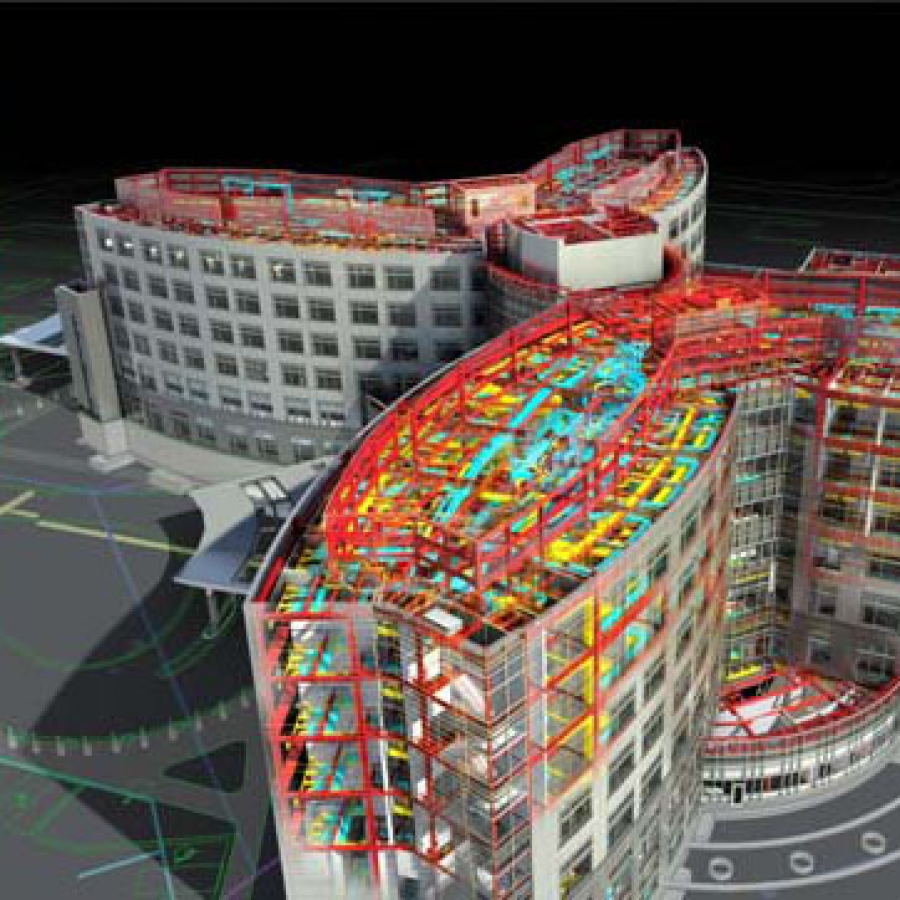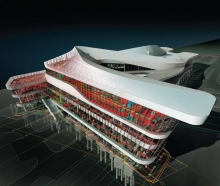BIM 360: Collaboration, Data Management, and BIM
Tight budgets and aggressive timelines are nothing new in the construction industry. The current economic climate has only increased the need to deliver more for less. More and more, the industry is now turning to Building Information Modeling (BIM) to help increase productivity, minimize waste, and prevent costly errors earlier in the construction process. According to Building Design+Constructionís 2009 Giants 300 Survey, half of all respondents reported using at least 30 seats of BIM software, and a recent McGraw-Hill Construction survey report revealed that 50 percent of North American contractors have adopted BIM.

Itís not difficult to understand the increasingly central role BIM is taking in construction planning and management. An intelligent model-based process that helps you insightfully create and manage building and infrastructure projects, BIM offers faster, more sustainable, and more economic solutions with less environmental impact. BIM helps improve the predictability of project outcomes, enabling you to explore a project digitally before construction begins. Information-rich models make it easier to accomplish crucial tasks earlier and more accurately, from addressing potential clashes and sequencing construction phases to calculating material takeoffs.
The Collaboration and Data Management Challenge
The digital tools that enable the BIM process are now driving the creation of higher volumes of data, and todayís project teams can be more dispersed than ever before. To keep construction projects on-track and get the most from your BIM workflow, you need to manage all types of project information more effectively and use the information as a basis for multidisciplinary collaboration.
Ad hoc collaboration and data management processes (such as file naming schemes), VPN (virtual private networks), and FTP (file transfer protocols) cannot scale to meet the needs of todayís BIM-powered construction projects. These processes often result in miscommunications, errors, and delays -- problems that can ultimately derail projects. Other data management and collaboration solutions commercially available to the architecture, engineering, and construction (AEC) industry also miss the mark. These large, complex data management solutions usually require excessive amounts of time and money to implement. Not only are they intricate and difficult to support, they fail to account for the third-party project team members so common to todayís AEC industry.
A New Approach to an Old Problem
To help meet the industryís pressing collaboration and data management challenge, a new and innovative approach is needed. This approach needs to deliver a complete, accurate, and digital view of design and construction projects to multidisciplinary teams in the office or in the field.
Such an approach would help drive:
Decisions that improve project quality and outcomes. When people have the right information at the right time, they make decisions that help prevent costly change orders and minimize requests for information (RFIs), mistakes, and rework.
Insight and predictability that enable timely, profitable delivery. Early model-based collaboration in construction planning means everyone -- from construction managers to subcontractors -- can understand projects more fully, before construction begins.
Improved operational reliability and efficiency. Better data management helps make it possible to guide construction using up-to-date information, helping to increase efficiency throughout construction and making it possible to deliver a complete project model to owners for use in operations.
At Autodesk, we refer to the new approach as BIM 360 -- a complete, accurate, digital view of an AEC project, with access to information across the project lifecycle from wherever itís needed: the office, the web, or the field.
To illustrate the value of a BIM 360 approach, imagine a complex hospital project or intermodal transportation project where there are dozens of design models, thousands of individual drawings, and massive amounts of other project data. Such projects often require expert input from multiple firms. The multidisciplinary teams involved in such projects need to work closely, without overwriting each otherís work, all while remaining confident that they have the latest version of project information. Once the project moves from design and preconstruction to the construction stage, there are even more parties involved, including subcontractors, fabricators, and various inspectors -- all of whom need to be able to coordinate tasks and resolve any issues that arise. To execute successfully, the firms involved need to be able to integrate construction workflows; manage and aggregate models; manage project documentation; and collaborate more effectively. Letís take a closer look at whatís needed to implement a BIM 360 approach and achieve these goals.
Integration with Construction Workflows
Construction firms need to quickly adopt centralized data management, in a way that integrates easily into current BIM workflows. Most firms do not have the resources to invest six months or more into implementing a data management solution. Having to re-engineer workflows that involve third parties, such as architects, engineers, and subcontractors, would prove even more impractical.
In looking for a better approach to data management, we recommend seeking a solution that offers fast deployment and intuitive integration into current BIM workflows. Direct access to models and project documentation from remote sites, along with support for virtually all commonly used design and modeling applications, is another essential ingredient. Firms with dispersed project teams should also look for a solution that uses cloud computing for secure external information exchange and mobile access.
Model Management
Complex construction projects require the input of dozens of professionals, including engineers, architects, cost estimators, and subcontractors. Each project participant contributes discipline-specific models from a variety of authoring tools to drive the project. In a BIM 360 environment, a single live model automatically coordinates the models provided by multidisciplinary teams. This gives everyone on the project access to the latest information, enabling faster, more efficient collaboration.
Project Documentation Management
While digital models are vital to the BIM process, construction projects generate a large number of 2D documents, including contracts, deliverables, spreadsheets, bid documents, photos, emails, RFIs, and more. What the construction industry needs is a BIM-driven solution to help manage documents as nimbly as it manages building models. Effective project documentation management encourages preferred version control processes and establishes permission-based access to documents. Team members can easily find the information they need while managers gain visibility into and control over project details.
Aggregation
Coordinating construction and performing clash detection requires the ability to bring together all design information, whether delivered as a model or not. It is important to be able to assemble all design details, even 2D drawings, into a single 3D model. Aggregation makes it easier to spot and address interferences well in advance of construction.
A typical challenge occurs in preventing interferences between structural elements and electrical systems on large projects. By combining designs provided by the structural and electrical engineers, it is easy to virtually walk through a project model with the engineers, addressing clashes on the fly. With aggregation, problems can be identified early on, which helps to prevent the time and money drain that so often accompanies RFIs.
Team Collaboration
Agile project execution requires communications that are informed, cross-discipline, and cross-stakeholder. Every construction firm needs a forum for streamlined, project-focused communication. Utilizing the Internet and social media, an effective collaboration solution will keep project teams connected to each other, their schedules, and all other project details -- helping to actively manage status and structure collaboration to resolve issues quickly and keep projects on track.
Keeping Up with BIM
Alternatives to overly complex solutions and ad hoc processes exist. Finding and implementing data management and collaboration solutions that help fully realize the benefits of a BIM process, such as our vision of a BIM 360 environment, will help todayís construction firms stay ahead of the competition.
Autodesk is a registered trademark or trademark of Autodesk, Inc., and/or its subsidiaries and/or affiliates in the USA and/or other countries. All other brand names, product names, or trademarks belong to their respective holders. Autodesk reserves the right to alter product and services offerings, and specifications and pricing at any time without notice, and is not responsible for typographical or graphical errors that may appear in this document.



